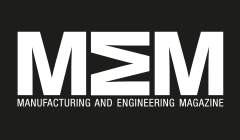Smart Manufacturing Should Approach Short-Range Wireless Solutions Differently

ABI Research found that short-range wireless connectivity solutions such as Bluetooth, Wi-Fi, 802.15.4, and (UWB) Ultra-Wide Band, among others, have a key role to play in enabling the Industrial Internet of Things (IIoT) across a wide range of use cases ranging from real-time location systems (RTLS) and asset tracking to industrial wearables, condition-based monitoring, augmented reality (AR), and robotics applications. However, the inherent diversity, complexity, technology fragmentation, and more stringent ROI and KPI requirements of industrial environments are key obstacles which wireless solution providers must overcome to build scale across multiple use cases. The industry is still very much in a nascent market phase, with companies still investigating how wireless technologies can enable increased productivity; what technologies and platforms should be used; how to maximize ROI; and how to realize the true benefits of connected systems. Many projects are still in pilot phases or limited to small-scale deployments, which can be difficult to scale up to a whole factory floor and larger environments. In addition, many end users are not necessarily invested in a long-term vision of the industrial IoT that leverages a certain technology but are predominantly concerned with fulfilling the needs of the OT department in the most cost-effective manner with immediate benefits to their operations. Alongside this, industrial equipment is often controlled by a few key vendors who are balancing legacy equipment with increased digitization. These vendors require solutions that are extremely reliable and that can be tailored to specific customers’ needs rather than a one-size-fits-all approach. Wireless technology suppliers need to align their offerings with industrial customers’ requirements rather than building their marketing messages based solely on speed, latency, and coverage. Wireless solution availability is also currently quite limited. Partnerships will need to be formed between wireless solution providers and key industrial suppliers to speed up and extend the available wireless solutions across many industrial use cases. However, tailoring existing products to industrial markets can also be very challenging. For RTLS solution providers, translating existing technologies such as Bluetooth beacons to an industrial environment can be difficult, and often the cost of testing for optimal location infrastructure deployment in dynamic industrial settings with changing obstacles and interference can be higher than the rollout of the infrastructure itself. It can also be very difficult to convince industrial customers to invest or accept new technologies. For customers with an existing Wi-Fi infrastructure, introducing them to Bluetooth or other connected sensor devices can be challenging due to the additional infrastructure requirements, therefore a Wi-Fi sensor can often be an easier sell. Emerging Bluetooth condition monitoring solutions from ABB and BluVision, UWB based RTLS deployments from Zebra, Sewio, and Siemens, in addition to AR and VR deployments from GE, Boeing, and Honeywell, among others, demonstrate this growing momentum, though the aforementioned challenges are hindering scalability.



